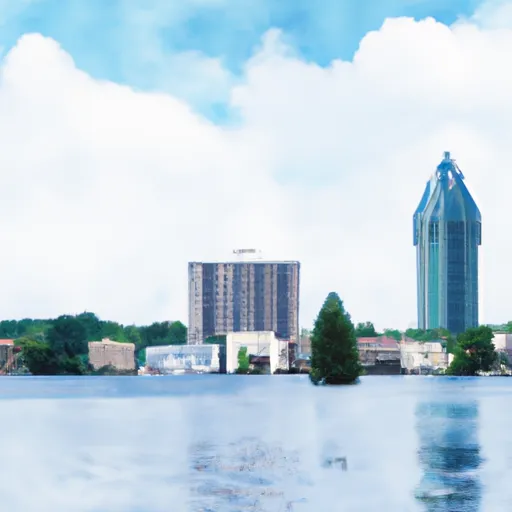-
 Snoflo Premium
Snoflo Premium
Get unlimited access to all our content
With no Ad interruptions! - Start Your Free Trial Login with existing account
Lake-Como
Eden Index
Climate
7.3
•
Recreation
6.9
•
Community
0.9
•
Safeguard
5.5/10

Lake Como is a charming community located in Florida, renowned for its picturesque landscapes and inviting atmosphere. The region enjoys a subtropical climate, characterized by hot and humid summers, with temperatures averaging in the mid-80s to low 90s Fahrenheit. Winters are mild and pleasant, typically ranging from the mid-50s to mid-60s.
Situated near the shores of Lake Como, the area boasts a diverse hydrology composition. The lake itself is a significant feature, providing opportunities for swimming, boating, and fishing. It is home to various aquatic species, including largemouth bass, bluegill, and catfish, making it a haven for fishing enthusiasts.
In addition to the lake, Lake Como is surrounded by lush forests, providing ample opportunities for hiking, bird-watching, and camping. The landscape offers a serene environment for nature lovers to enjoy the beauty of the outdoors. There are also nearby trails suitable for biking and horseback riding, adding to the range of outdoor activities available.
Overall, Lake Como, Florida, offers a delightful climate, diverse hydrology constituents, and numerous outdoor recreation opportunities, making it an ideal destination for those seeking an idyllic and enjoyable natural experience.
What is the Eden Index?
The Snoflo Eden Index serves as a comprehensive rating system for regions, evaluating their desirability through a holistic assessment of climate health, outdoor recreation opportunities, and natural disaster risk, acknowledging the profound impact of these factors on livability and well-being.
Climate Health Indicator (CHI): 7.3
Lake-Como receives approximately
1286mm of rain per year,
with humidity levels near 89%
and air temperatures averaging around
22°C.
Lake-Como has a plant hardyness factor of
9, meaning
plants and agriculture in this region tend to thrive here all year round.
By considering the ideal temperature range, reliable water supplies, clean air, and stable seasonal rain or snowpacks, the Climate Health Indicator (CHI) underscores the significance of a healthy climate as the foundation for quality living.
A healthy climate is paramount for ensuring a high quality of life and livability in a region, fostering both physical well-being and environmental harmony. This can be characterized by ideal temperatures, reliable access to water supplies, clean air, and consistent seasonal rain or snowpacks.
Weather Forecast
Streamflow Conditions
St. Johns
Area Rivers
St. Johns
Snowpack Depths
St. Johns
Reservoir Storage Capacity
St. Johns
Groundwater Levels
Recreational Opportunity Index (ROI): 6.9
The Recreational Opportunity Index (ROI) recognizes the value of outdoor recreational options, such as parks, hiking trails, camping sites, and fishing spots, while acknowledging that climate plays a pivotal role in ensuring the comfort and consistency of these experiences.
Access to outdoor recreational opportunities, encompassing activities such as parks, hiking, camping, and fishing, is crucial for overall well-being, and the climate plays a pivotal role in enabling and enhancing these experiences, ensuring that individuals can engage in nature-based activities comfortably and consistently.
Camping Areas
| Campground | Campsites | Reservations | Toilets | Showers | Elevation |
|---|---|---|---|---|---|
| Turkey Lake City Park | None | 122 ft | |||
| Trimble County Park | 15 | 65 ft | |||
| Clarcona Horse Park | None | 85 ft | |||
| Magnolia County Park | 96 | 81 ft | |||
| Kelly | None | 71 ft | |||
| Hontoon Island State Park | None | 0 ft | |||
| Clearwater Lake | 62 | 81 ft | |||
| Lake Louisa State Park | None | 154 ft | |||
| Big Bass | 34 | 69 ft | |||
| Wekiwa Springs State Park | None | 78 ft |
Catastrophe Safeguard Index (CSI):
The Catastrophe Safeguard Index (CSI) recognizes that natural disaster risk, encompassing floods, fires, hurricanes, and tornadoes, can drastically affect safety and the overall appeal of an area.
The level of natural disaster risk in a region significantly affects safety and the overall livability, with climate change amplifying these risks by potentially increasing the frequency and intensity of events like floods, fires, hurricanes, and tornadoes, thereby posing substantial challenges to community resilience and well-being.
Community Resilience Indicator (CRI): 0.9
The Community Resilience Indicator (CRI) recognizes that education, healthcare, and socioeconomics are crucial to the well-being of a region. The CRI acknowledges the profound impact of these elements on residents' overall quality of life. By evaluating educational resources, healthcare accessibility, and economic inclusivity, the index captures the essential aspects that contribute to a thriving community, fostering resident satisfaction, equity, and social cohesion.

